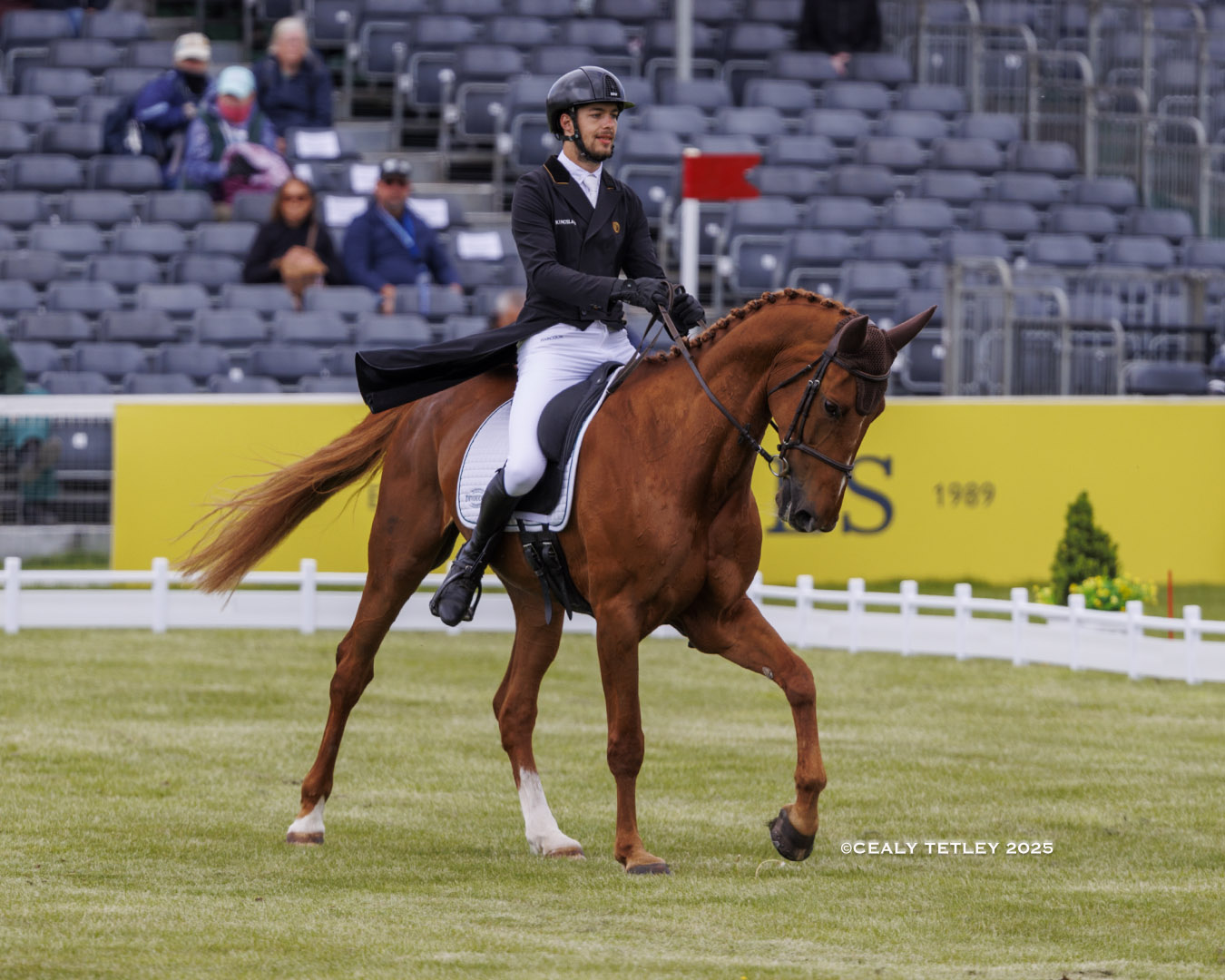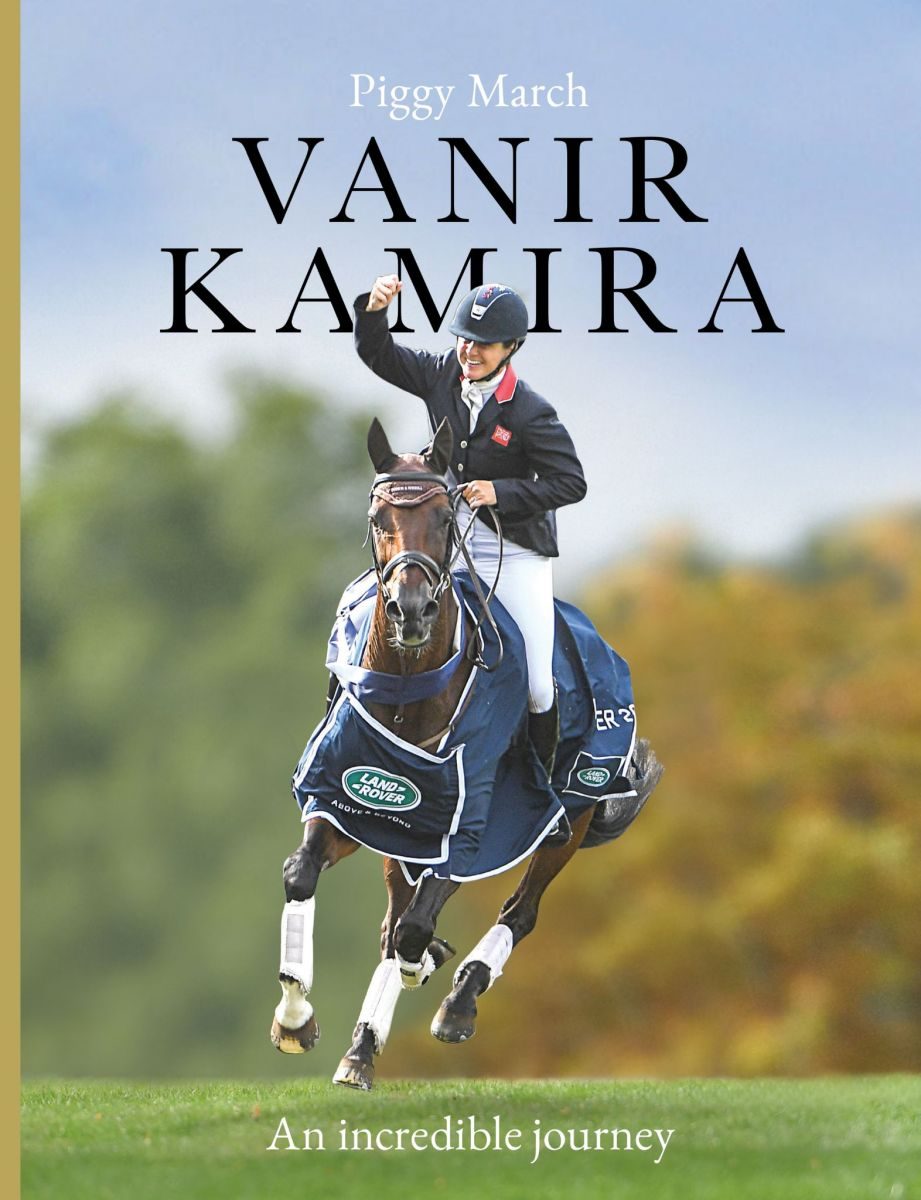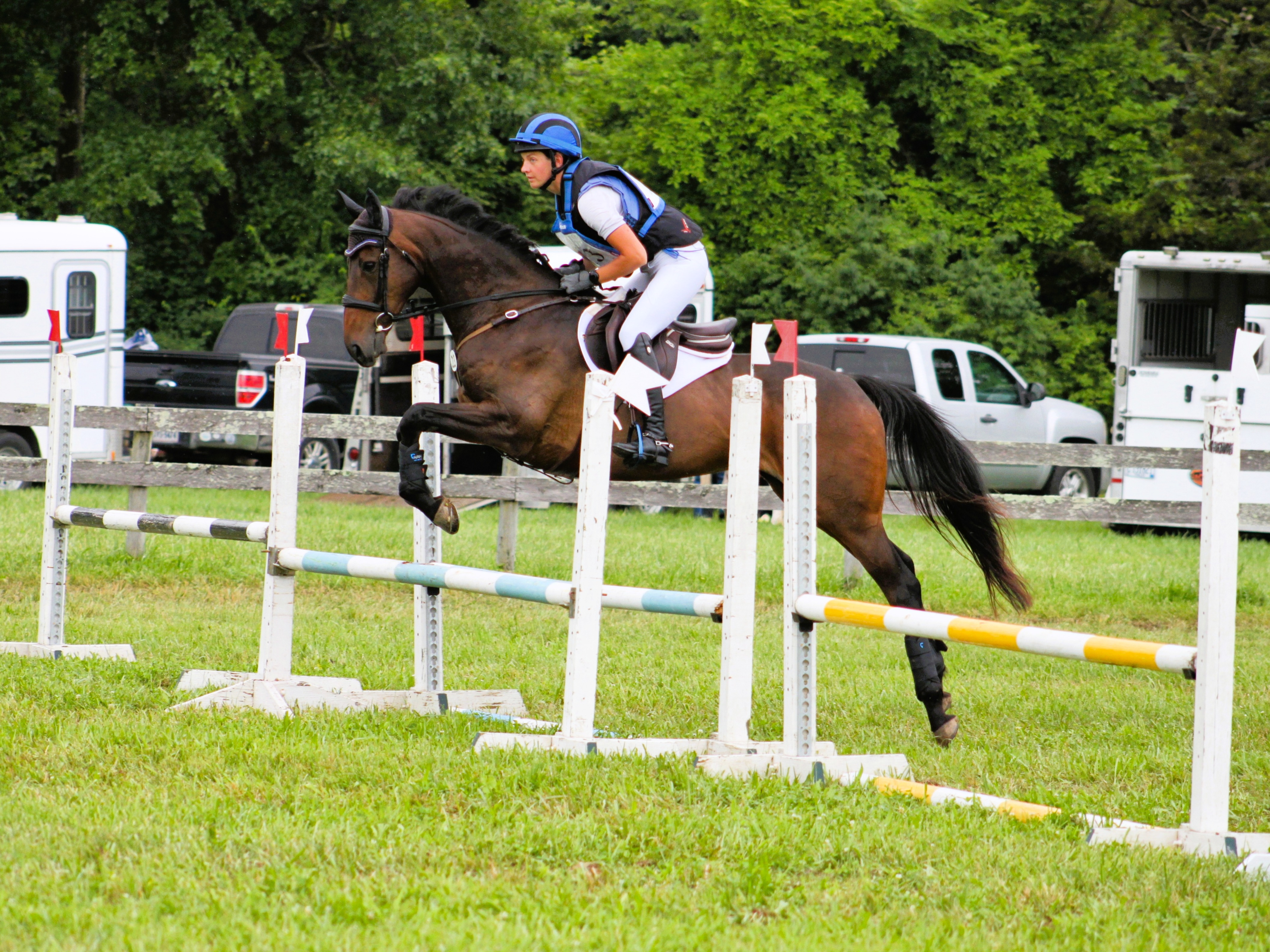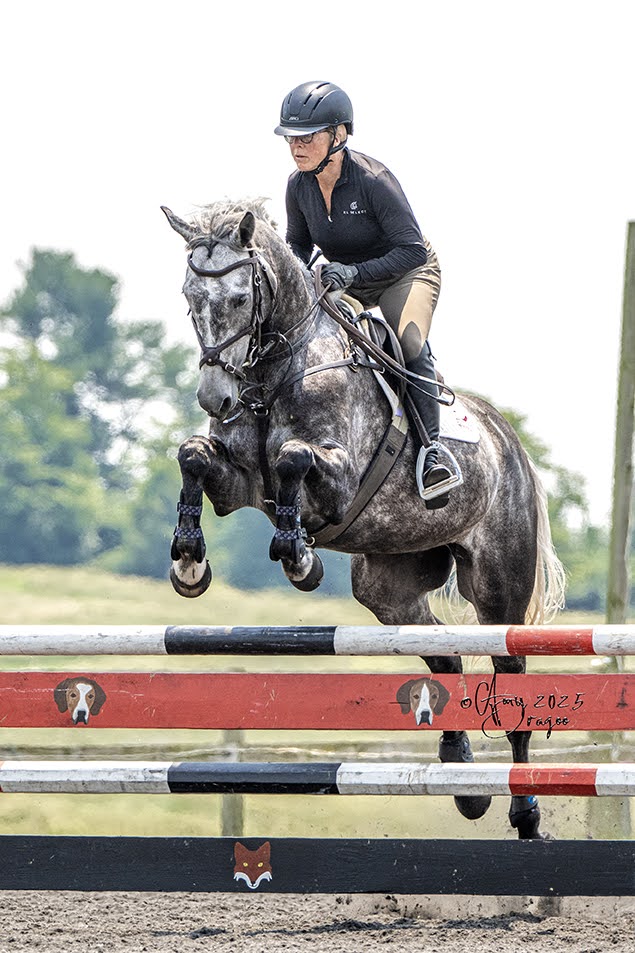
Yuya Segawa and Vegas De L’Elfe. Photo by Athalens.
Japanese riders have taken the sport of eventing by storm in recent years, and the newest star in their firmament, Yuya Segawa, shone at Belsay by scoring his first European international victory in the NIS Group Services/Encon Technical Solutions CIC2*-S.
Riding Vegas De L’Elfe JRA, 25-year-old Yuya show jumped clear and added just 1.2 cross country time-faults to his second-placed dressage mark of 30.2 to take the competitive class by less than a penalty from Scotland’s Louisa Milne Home.
Yuya, who is based in Leicestershire with eventer Richard Jones, only took over the ride on 16-year-old Vegas De L’Elfe from fellow Japanese rider Shunto Takahashi in April.
“He is a great horse who has a lot of experience and knows his job and I think I will learn a lot from him,” said Yuya. “He felt very confident across country and it was fun to ride him.”
Belsay formed the first element of the 2025 Northumberland Challenge, which offers a huge prize-pot of £61,000 to riders who win or are placed in the CCI2*-S, CCI3*-S and BE100 at the three Northumbrian international events of Belsay, Alnwick Ford (18-22 June) and Burgham (24-27 July). Yuya now has his sights set on Alnwick Ford and Burgham – and his ambition is to ride for Japan at the Olympics.
Louisa finished second with her own and Susie Wilks’ Future Plans on 32.2, while rising British star Jago Jackson, 17, was third on Cooley Top Boy.

Katie Magee and Agadir Gano. Photo by Athalens.
Local riders also made their mark on Friday afternoon at Belsay. Barnard Castle’s Katie Magee enjoyed the perfect Bramham preparation run by winning the Galbraith Intermediate Novice on Angela Hislop’s Agadir Gano.
“Our bit snapped across country at Belsay (1) two weeks ago, so today was all about testing out a new bit and checking we had brakes,” said Katie. “The course was fantastic and the ground is amazing, so we’ve really enjoyed it. The fact that the Belsay team has run two brilliant events in two weeks is incredible – I think we should have two Belsays every year!”
Will Murray, who lives in Durham, won the Evelyn Partners/HorseQuest Novice Masters’ on Linda Philipson’s seven-year-old mare Drumrankin Idha.
“I’m very lucky – I’m a part-timer rider these days; I’m the lead coach for British Eventing in the northern region – so I just turn up and ride a couple of days a week, and the team at Linda’s do all the fitness work. My showjumping coach Philippa McKeever came to warm me up today, which was a big help, because I thought it was a proper track. The mare finds the cross country very easy and she’s naturally very fast. I’m a lucky person to ride such a special horse.”
Local rider Lucinda Atkinson has held on to her lead in the Barbour CCI2*-L on PRF Made In England with a faultless cross country round, adding nothing to her dressage mark of 27.4. Eliza Bell (Macgyver) and India Wishart (BP Quinnton) are second and third.
In the Lycetts British Junior Championships, the podium remains unaltered after cross country. Lucy Standish is in first place on Global H on 25.9. Second is Ella Howard (Marchwood, 27.8), with Oscar Fitzgerald third with 28 on Super Cillious.
Annabel Ridgway has kept the top slot going into the final showjumping phase in the Project Pony British Pony Championships on Akim De L’Arquerie ahead of Maisie Greening (Kilnaspic Lily) and third-placed Alice Fraser (Bookhamlodge Pennylane).
Izzy Taylor has maintained her lead in the Hambro Sport Horses CCI3*-S on Bayaanaat with a dressage score of 26.2, but Willa Newton has slipped into second on Hartacker with 26.2. India’s Shashank Kanumuri is third on 27.8 with Gideon II.
A busy Saturday at Belsay starts with dressage for the national intermediate classes at 8 a.m. (3 a.m. EST) and CCI3*-S showjumping at 8.30 a.m. (3:30 a.m. EST). Cross country commences at 10.30 a.m. (5:30 a.m. EST). There is also a BSPS show in the Castle Arena, a fun dog show, lots of children’s entertainment, excellent shopping and delicious locally produced food and drink available.
To purchase tickets for Belsay and to find out more information, please visit www.belsayhorsetrials.com. All the cross country at Belsay will be shown on Horse & Country TV’s live streaming platform H&C+ here.











































































